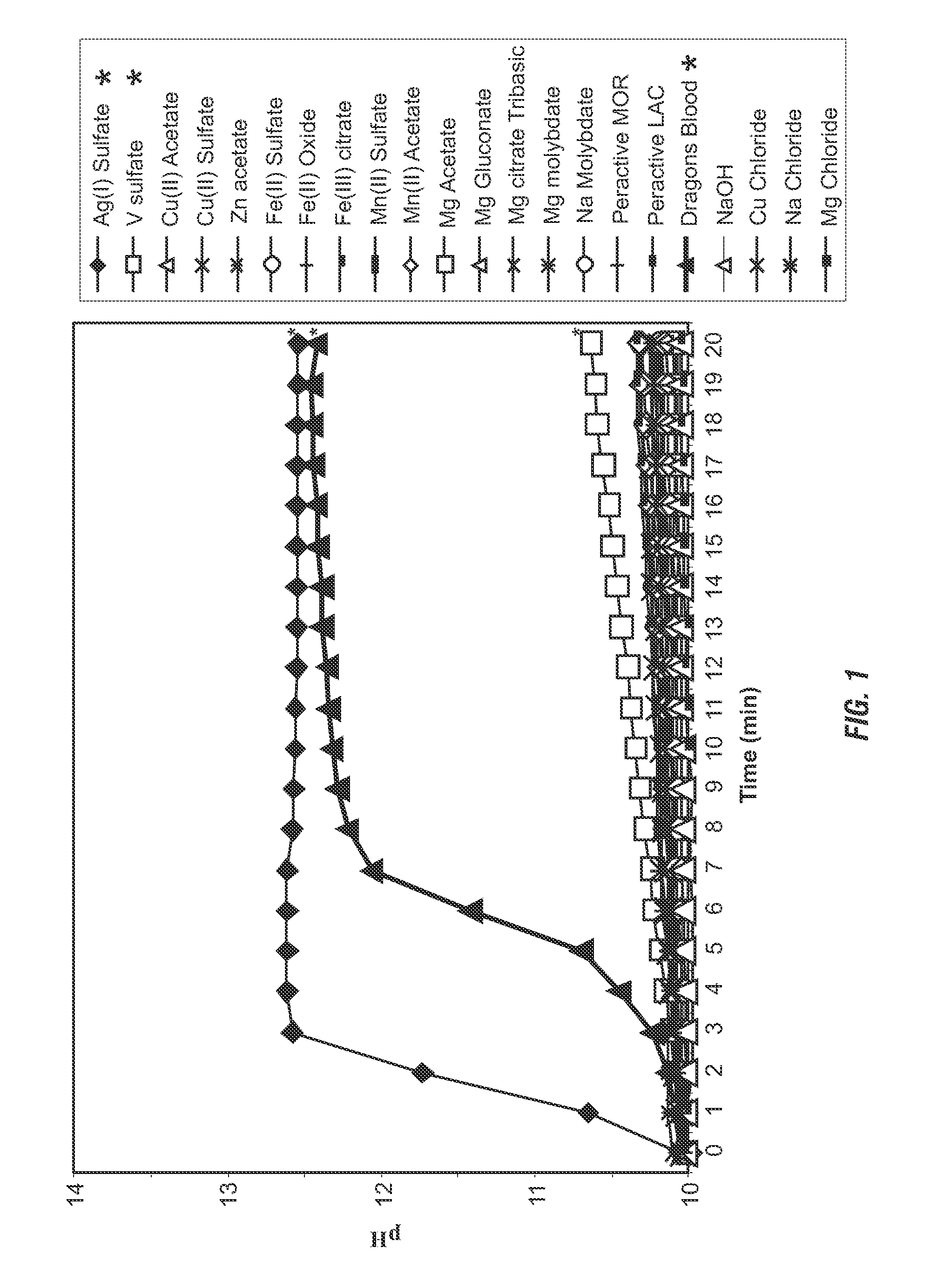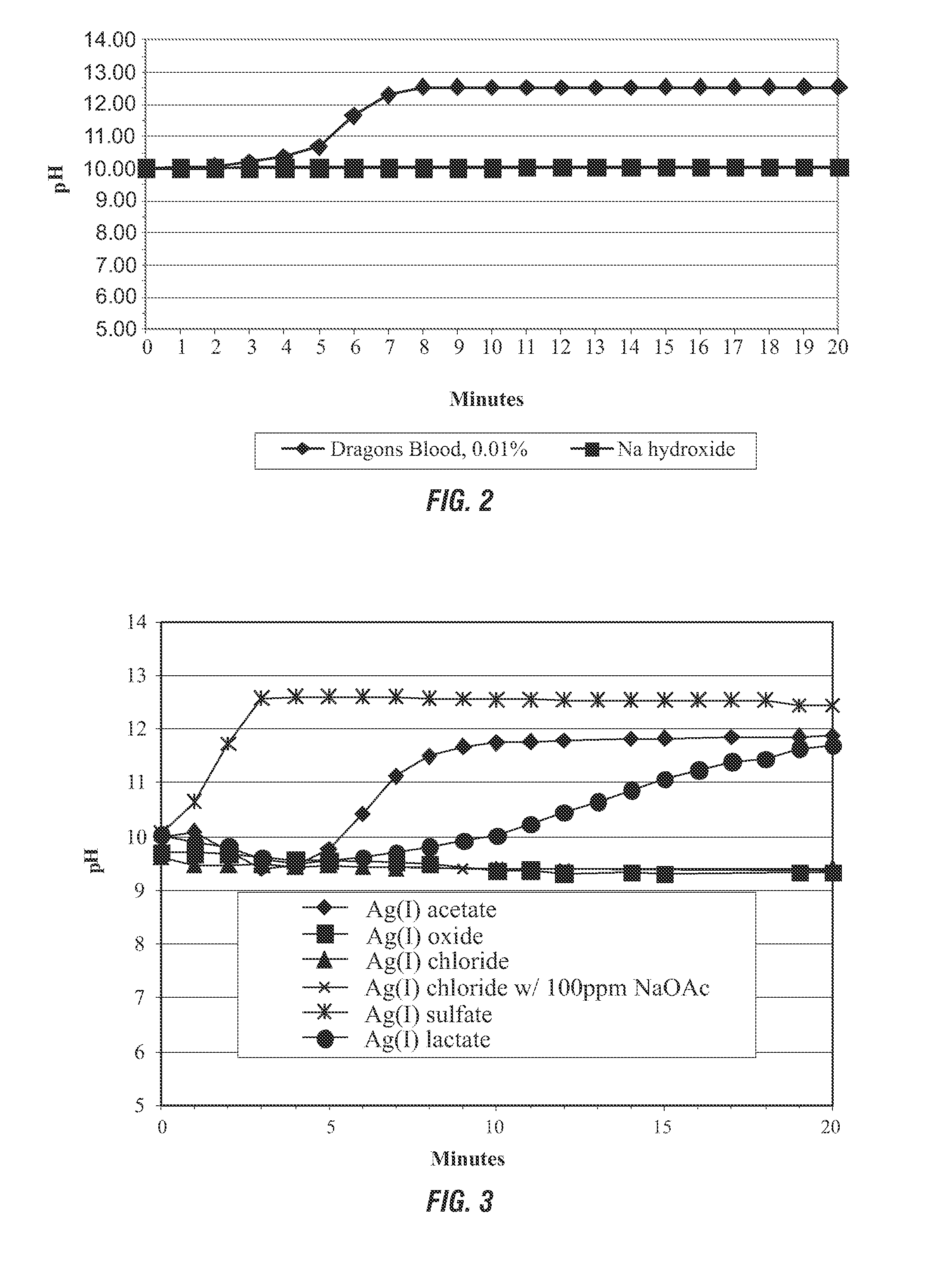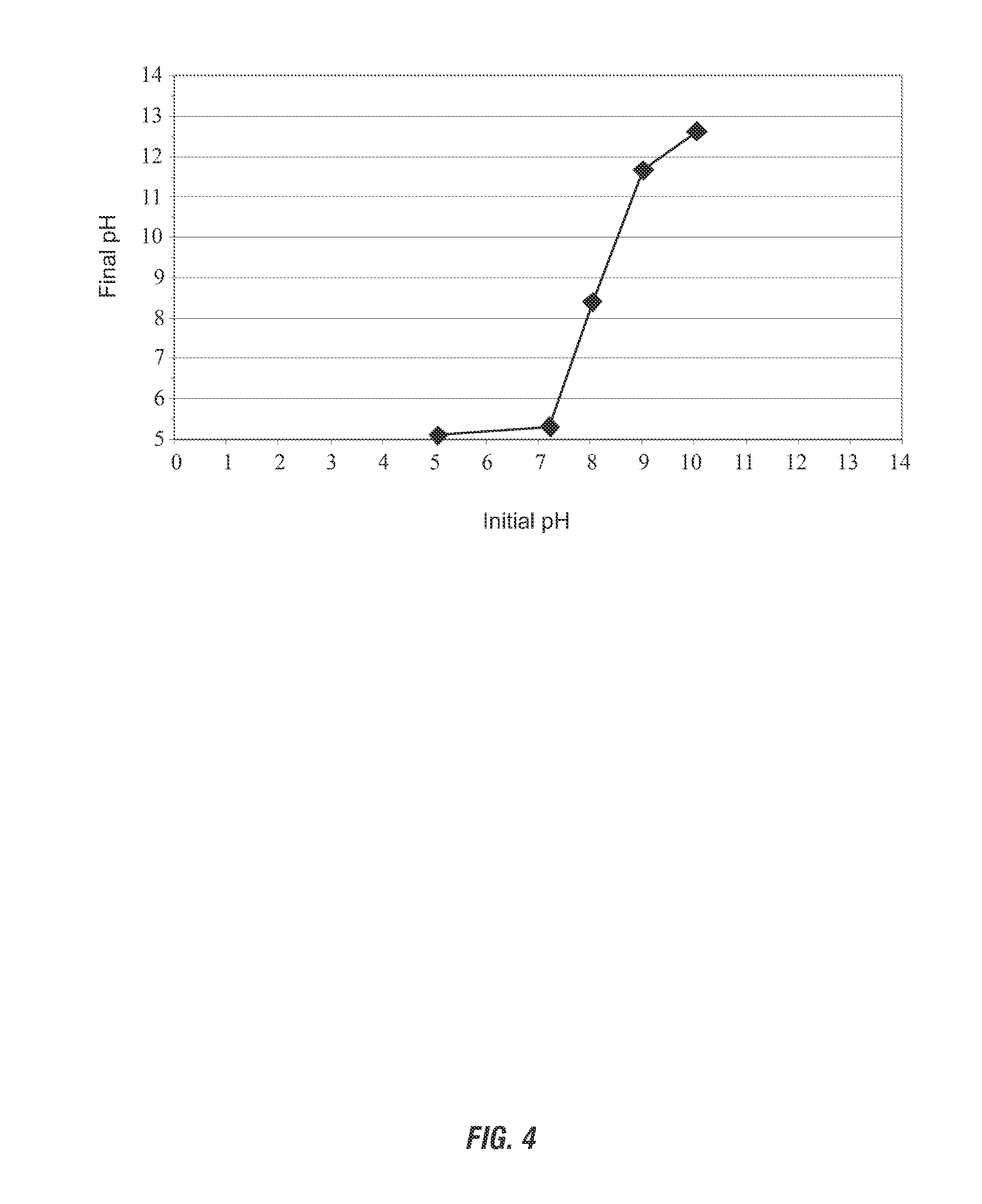Peroxygen catalyst- containing fabric and use for in situ generation of alkalinity
a technology of peroxygen catalyst and in situ generation, which is applied in the direction of non-surface active detergent compositions, detergent compositions, organic/inorganic per-compound compounding agents, etc., can solve the problems of increased risk to workers and burns to exposed skin, so as to reduce the risk of exposure to workers, improve cleaning, and increase alkalinity
- Summary
- Abstract
- Description
- Claims
- Application Information
AI Technical Summary
Benefits of technology
Problems solved by technology
Method used
Image
Examples
example 1
[0106]Evaluation of Decomposition Agents: Various potential decomposition agents were tested for an increase in pH by hydrogen peroxide decomposition. Aqueous solutions were prepared including 5% hydrogen peroxide having an initial pH of 10, and 100 ppm of various decomposition agents. The pH of the solutions was monitored for 20 minutes at ambient temperature and the results are shown in FIG. 1. Very few materials resulted in a pH increase as they caused the decomposition of hydrogen peroxide. Silver sulfate produced an increase in pH comparable to that obtained with a manganese-containing compound commercially available as “Dragons Blood” / Dragon A350 (manganese) from Rahu Catalytics. Silver sulfate also produced one of the fastest rates of pH increase via hydrogen peroxide decomposition compared to the various potential catalysts evaluated for alkalinity generation.
[0107]In addition to monitoring the pH of the solutions, the solutions were also observed for the presence of bubblin...
example 2
[0110]Use of Manganese Compounds as Decomposition Agents: An aqueous solution of 5% hydrogen peroxide was adjusted to a pH of 10. The solution was then treated with 100 ppm of Dragon A350 (also referred to as Dragons Blood), a commercially available bleach activator from Rahu Catalytics. According to the invention, Dragon A350 has catalytic activity in the decomposition of peroxy compounds with an accompanying increase in pH.
[0111]The pH was monitored over time and the results are shown in FIG. 2. Although Dragon A350 is known to activate bleaching complexes, in the absence of a bleachable substrate as in this experiment, the Dragon A350 decomposed the hydrogen peroxide to form alkalinity. A final pH of over 12 was obtained in about 8-9 minutes at ambient temperature, representing an increase in pH of more than 2. In contrast, alkalinity alone did not lead to hydrogen peroxide decomposition, as shown by the stability of the sodium hydroxide line on FIG. 2.
example 3
[0112]Comparison of Silver Compounds as Decomposition Agents: Further evaluation of silver compounds as decomposition agents found that not all silver systems produced a pH increase under the test conditions (100 ppm catalyst, initial pH 10, 5% hydrogen peroxide). Silver sulfate and its carboxylate salts proved to be the most active for increasing pH. It was speculated that adding sodium acetate to the apparently inert silver chloride might result in ion exchange to form the active and more expensive silver acetate. However, no increase in activity over silver chloride alone was noted. An overall trend in silver compound activity appears to be correlated with increasing water solubility of the compounds. FIG. 3 demonstrates silver sulfate and its carboxylate salts produced the greatest increase in pH.
PUM
| Property | Measurement | Unit |
|---|---|---|
| pH | aaaaa | aaaaa |
| pH | aaaaa | aaaaa |
| pH | aaaaa | aaaaa |
Abstract
Description
Claims
Application Information
 Login to View More
Login to View More - R&D
- Intellectual Property
- Life Sciences
- Materials
- Tech Scout
- Unparalleled Data Quality
- Higher Quality Content
- 60% Fewer Hallucinations
Browse by: Latest US Patents, China's latest patents, Technical Efficacy Thesaurus, Application Domain, Technology Topic, Popular Technical Reports.
© 2025 PatSnap. All rights reserved.Legal|Privacy policy|Modern Slavery Act Transparency Statement|Sitemap|About US| Contact US: help@patsnap.com



